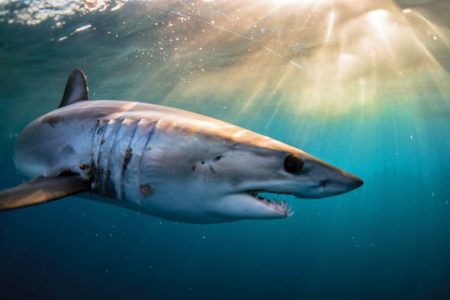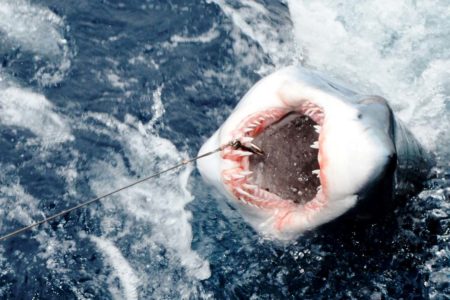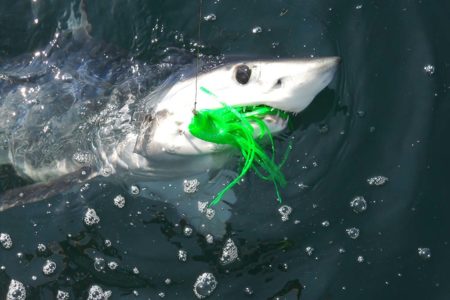How real is the threat posed by sharks, especially great whites, to casters who ply the Striper Coast?
To learn more about these amazing creatures and the work these men are doing check out these websites and apps.
The Atlantic Shark Institute
www.atlanticsharkinstitute.org
The White Shark Conservancy
https://www.atlanticwhiteshark.org/
The Sharktivity App
They call this the “The white shark sighting and resource app” and it’s available for iOS and Android. The app will send you alerts about recent sightings, real-time acoustic tag correspondences, recent taggings and more.
Follow on Instagram
@ma_sharks
@atlantic_shark
@atlanticsharkinstitute (on Facebook)
Also feel free to report any shark sightings or other interesting sharky observations to John Chisholm at [email protected]
I stood on the shoreline and looked out across the wide patch of deep water that separated me from the rock I was planning to fish from. It was one of those misty nights where rocks appeared as a black ink stamp on ‘almost black’ paper. The surf was gentle, but the blackness replaced any relief afforded by the calm seas with an uneasy feeling. Irrational as these feelings are, they are compounded in the dark, and seem to increase by factors of ten when I’m alone. I stepped into the cool water and within 15 steps the bottom disappeared, I laid over on my side and began the 70-yard swim.
Most of the swims I make are matters of convenience, I could walk most of the way, but swimming is easier. But this particular rock is separated from the shore by a 20-foot deep gully. Whenever I make this swim, especially when I’m alone, I can feel the ghosts of my imagination tracking me from below. I reason my way out of it, with the impossible odds, the likelihood of a great white shark hanging around in this 70-yard wide gully would be pretty remote. But maybe some seals were in there today, I would have no way of knowing. I imagine the impact and decide that I probably wouldn’t even know what hit me, so I brush it off with a nervous laugh. Kicking harder now I feel the ghostly shadow raise its fin behind me, a flutter of rollercoaster nerves pours pure adrenalin into my aorta—my kicks become more frantic until my hand finds the stone, I scramble aboard as if my feet were dangling from a skyscraper. Standing on slick granite brings the sweet salvation of relief, I look back at the shore and realize I still have to swim back.
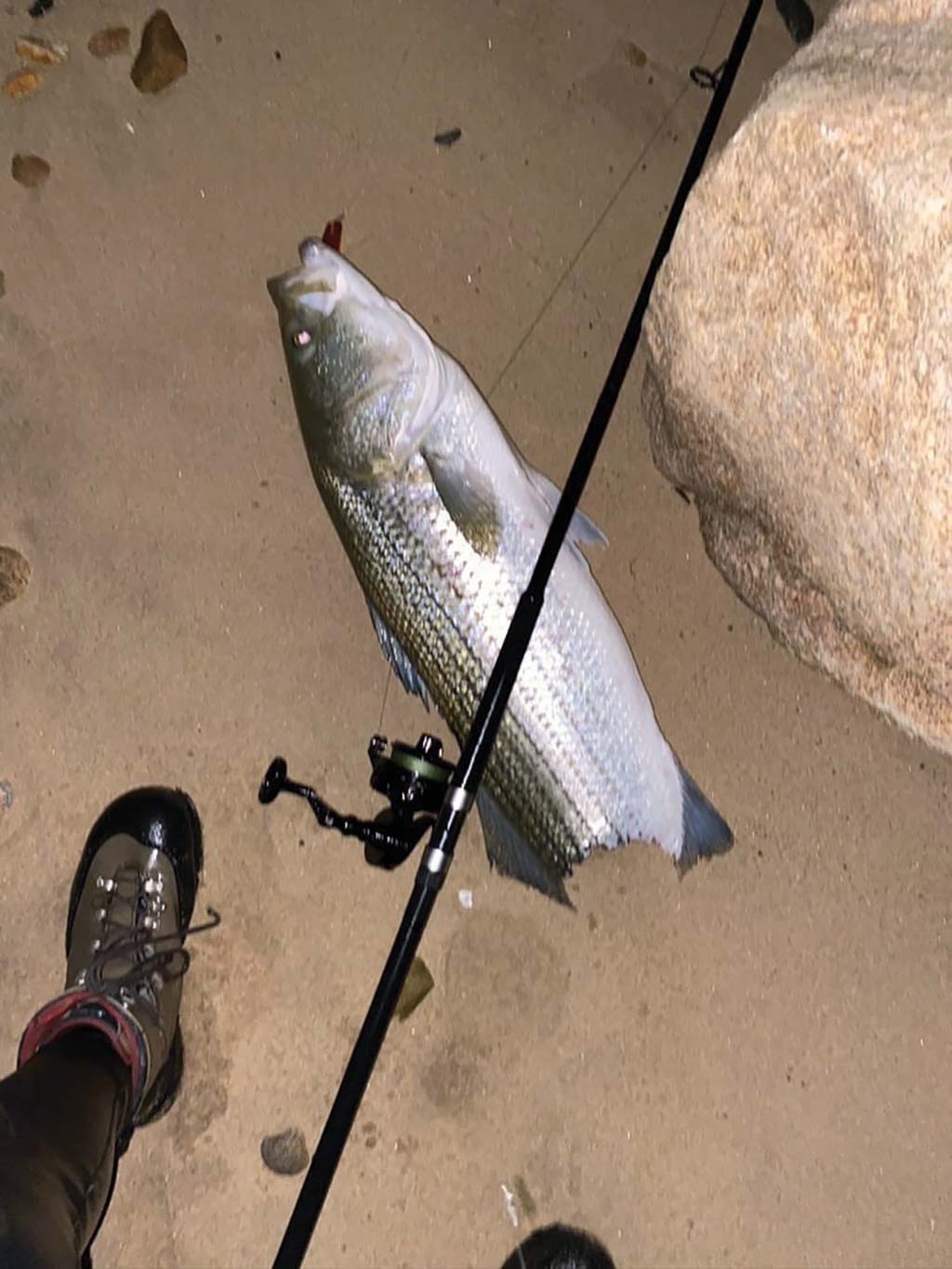
True Or False?
Over the past five years, or so, I have talked to an increasing number of surfcasters that have given up on swimming to rocks. They cite the documented increase in great white shark activity as the reason. I always use the impossible odds as my main reason for not worrying too much about a shark attack. Just the square footage of the water I can see with my eyes would render the odds of a chance encounter with a great white shark that was somewhere in that circle, next to impossible. Another supposed fact I have hung my hat upon is that great whites do not hunt in the dark. I asked Massachusetts Shark Biologist John Chisholm if this was a true fact, “That is absolutely not true,” he said, crushing my delusional dreams in the process, “great white sharks will feed whenever the opportunity presents itself.” But he was quick to add, “The risk is probably the same as any other bather and attacks are extremely rare. You have to assess the situation and weigh the risk versus the reward.”
Another factoid I loved to cling to was that I wasn’t night swimming to sandbars off of Nauset Beach or Monomoy, in other words, the presence of seals would definitely increase my odds of becoming a target. Jon Dodd, Executive Director of the Atlantic Shark Institute, told me, “It’s different if you’re swimming in waters surrounding the major seal haul-outs. The sharks we document swimming by the acoustic receivers off of Block Island and Montauk are typically gone in a day. They’re all headed to Cape Cod. These sharks are not dumb, they set up in the shallows off these beaches on the Cape and they know those seals have two choices; they can stay on the beach and starve or they can get in the water and swim out to their fishing grounds. The sharks set up in between and wait for a feeding opportunity.”
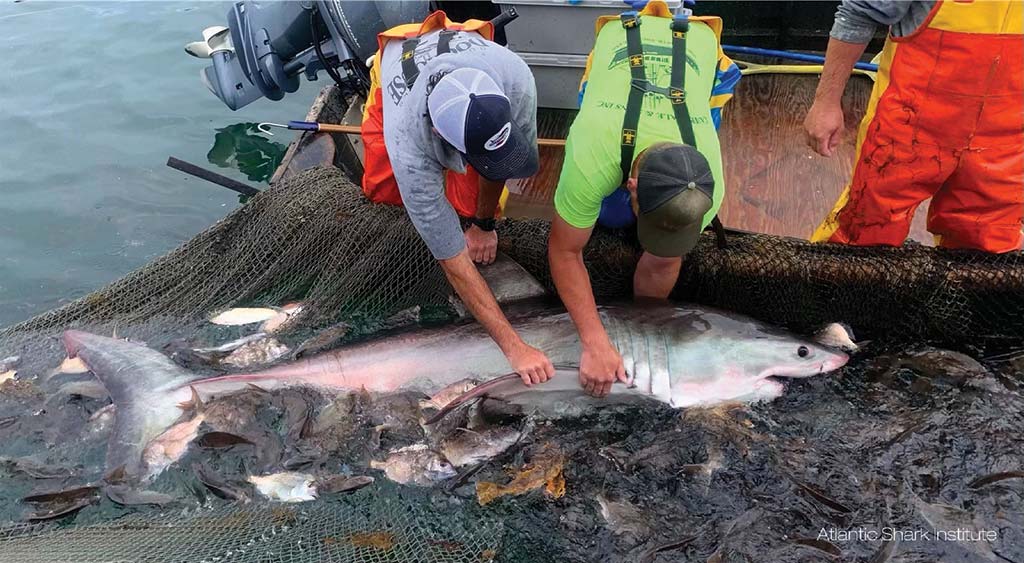
More Great Whites?
We’ve all become hyper-aware of great white sharks over the last decade or so, the debates about the burgeoning seal population on Cape Cod and the sensationalizing of every shark encounter by television and social media has only served to exacerbate this. We have come to a point where, even an encounter with a shark that might have been a great white is going to make the news and earn 10,000 likes on the social media platform of your choice. I asked Jon Dodd if he thought there really were more white sharks now than there ever were and he said, “Technology has come a long way with regard to determining the presence of these sharks. This means we know when tagged great whites swim through our waters and the public is made aware of this any number of ways. Even as recently as just a few years ago, there were no acoustic receivers at Block Island, now there are nine and they’re picking up on known sharks moving through the area. This has led the general public to conclude, ‘now they’re at Block Island!’ But these sharks can live to be 70 years old, they were probably always there and the remote likelihood of being attacked has, almost certainly, not changed.”
It’s a classic case of blissful ignorance, if you don’t know you’re stepping over a nest of angry yellow jackets every morning on your way to the mailbox, then the trip out the back door is never more dangerous than the last one. But when you finally see those nasty little hornets buzzing to and fro, you lock that door and use the front because you’re certain you will be stung and you can’t believe you made that walk every day of the summer without being attacked! The truth, in the case of the yellow jackets and the sharks, is that your likelihood of confrontation is the same every time you go.
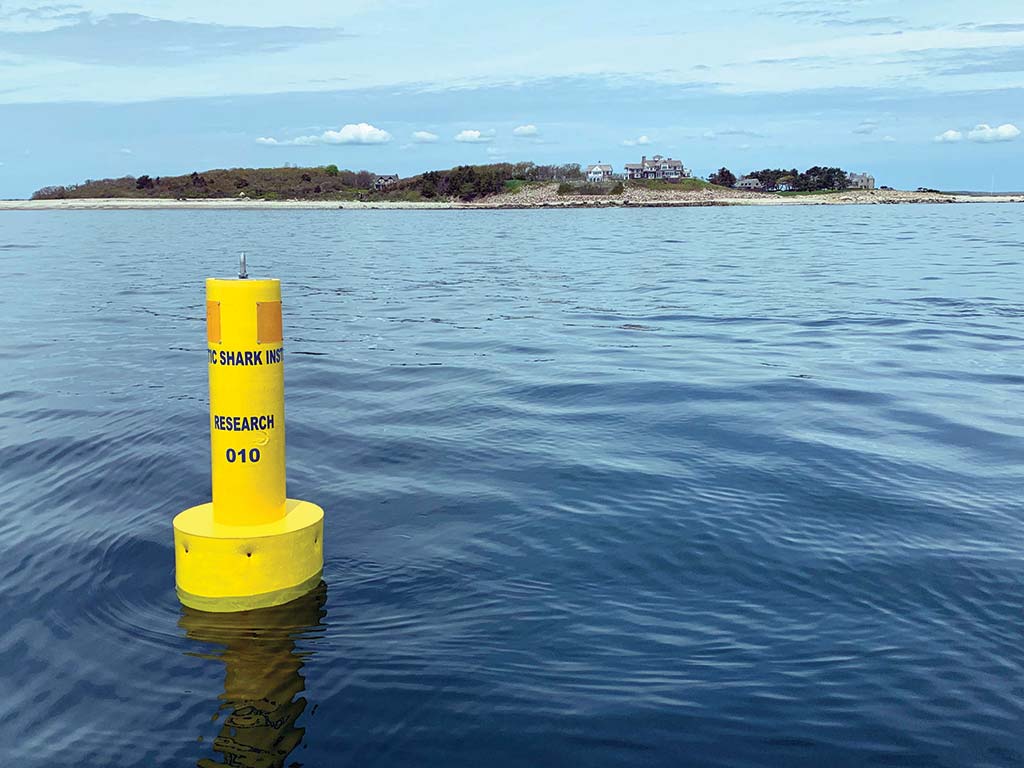
The Montauk Nursery
Over the past few seasons rumors have been passed through social media that Montauk and other parts of the south shore of Long Island have become a new nursery for juvenile great whites. I asked Jon Dodd about this who conducts shark surveys between Point Judith, Block Island and Montauk and he said, “In no way is that a new thing.” Dodd continued, “There was a scientist named Jack Casey who documented a great white shark nursery in the New York Bight, between Long Island and New Jersey decades ago. They set a few long-line trawls in that area and there was this fascinating photo of one of their sets with several young of the year whites on it.” He went on to say that a few seasons of increased juvenile shark activity in a specific area may have more to do with water temp and a food source than anything else. “As these sharks grow they are more willing to leave the nursery area to look for food. Said Dodd, “As we tag more, video more and track more of these sharks we hope to answer that question and make it less speculative and more concrete.”
The Most Dangerous Waters
Basic fishing logic can be applied when determining where the greatest likelihood for an attack might be. We can use the example of striped bass ambushing herring at the mouth of a run. The bass are going to set themselves up on that first little dip outside the run, a place where the herring will be forced to swim clear of the shallows and open themselves up to predation. Those stretches of the Cape beaches where deep water creeps right up to the bank, where you’re in 8 feet of water when you’re only 15 feet from dry sand, that’s the spot that’s going to provide the feeding advantage. “They’re looking for that deep edge feeding advantage, just like striped bass,” said John Chisholm who has striper fished his whole life. “If you’re swimming on those deep edges near these known [seal] haul-out areas, you’re putting yourself at a much greater risk.” He also suggested that you can use the publicly available tagging data to determine hotspots. If you visit the White Shark Conservancy website and look at their logbook, you can see the areas where the paths of the tagged sharks seem to congregate. “And you have to remember there are many, many more un-tagged sharks out there, so these aggregation areas are probably visited by even more sharks than we know.” Chisholm added.
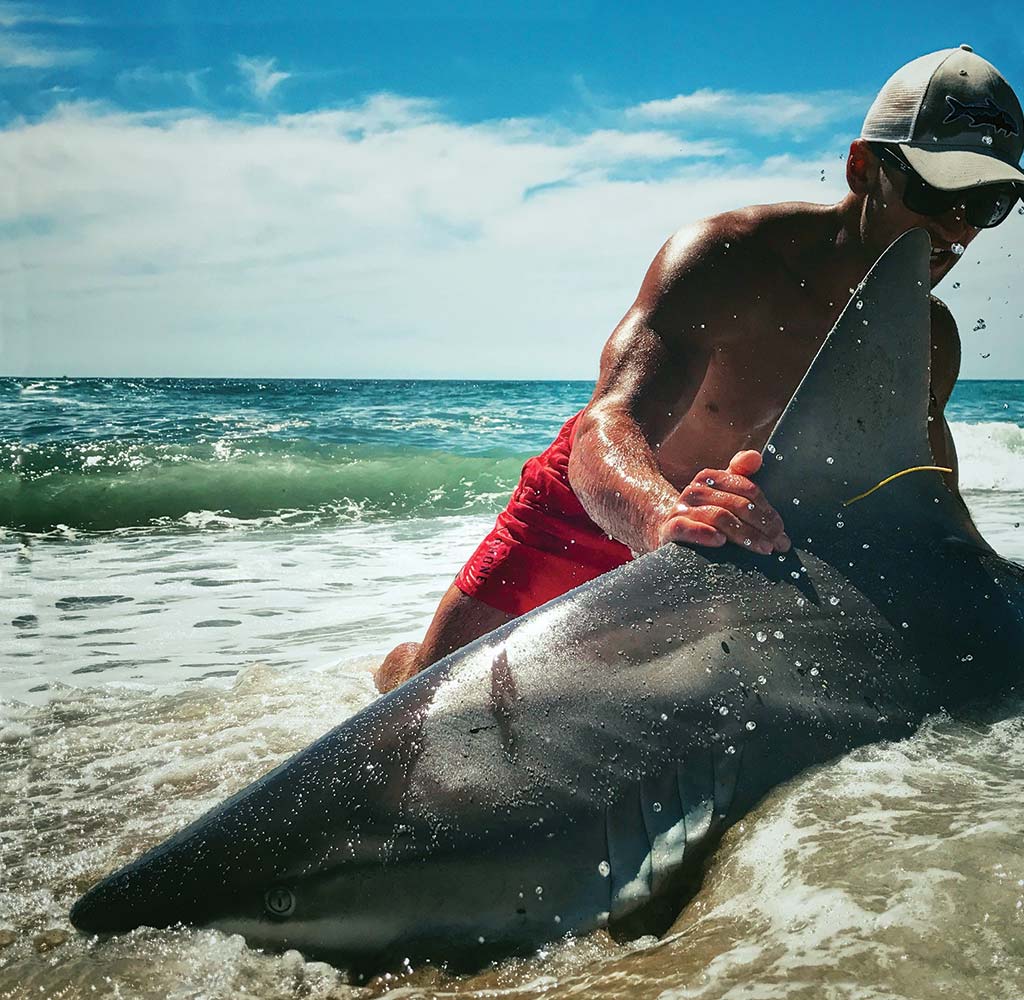
Other Sharks
There are many other species of shark that swim in our waters too, browns are prevalent from New Jersey to Martha’s Vineyard, spinners have become regular visitors to New Jersey and Long Island. Sand tiger sharks are making an amazing comeback after being almost completely wiped out in the late 1800s. I had to know if surfcasters had to worry about these species as well. “Anything with a mouth can bite,” said Chisholm, “But these smaller species of inshore sharks pose almost no threat to swimmers or fishermen as long as they are given their space and plenty of respect.”
Last Bites
I walked away from these interviews with a greater understanding of shark data and how basic the logic is when determining where the danger is the highest. We have more data than ever now and it’s being freely fed to the public and the media. Many people think of sharks as menacing, scary and mysterious and that makes for a great news story and draws lots of eyeballs. However, when you look at the data and think about the fact that our awareness has been fueled by an increase in data and (most likely) not an increase in sharks, I find myself breathing a sigh of relief. When we fish the waters away from the great haul-out areas, our risk is not any higher or lower than it was five, ten or 15 years ago. It’s been – more or less – the same all along.
I wanted to make sure and thank John Chisholm and Jon Dodd for sharing their time and their wisdom on this usual relationship between sharks and fishermen.
